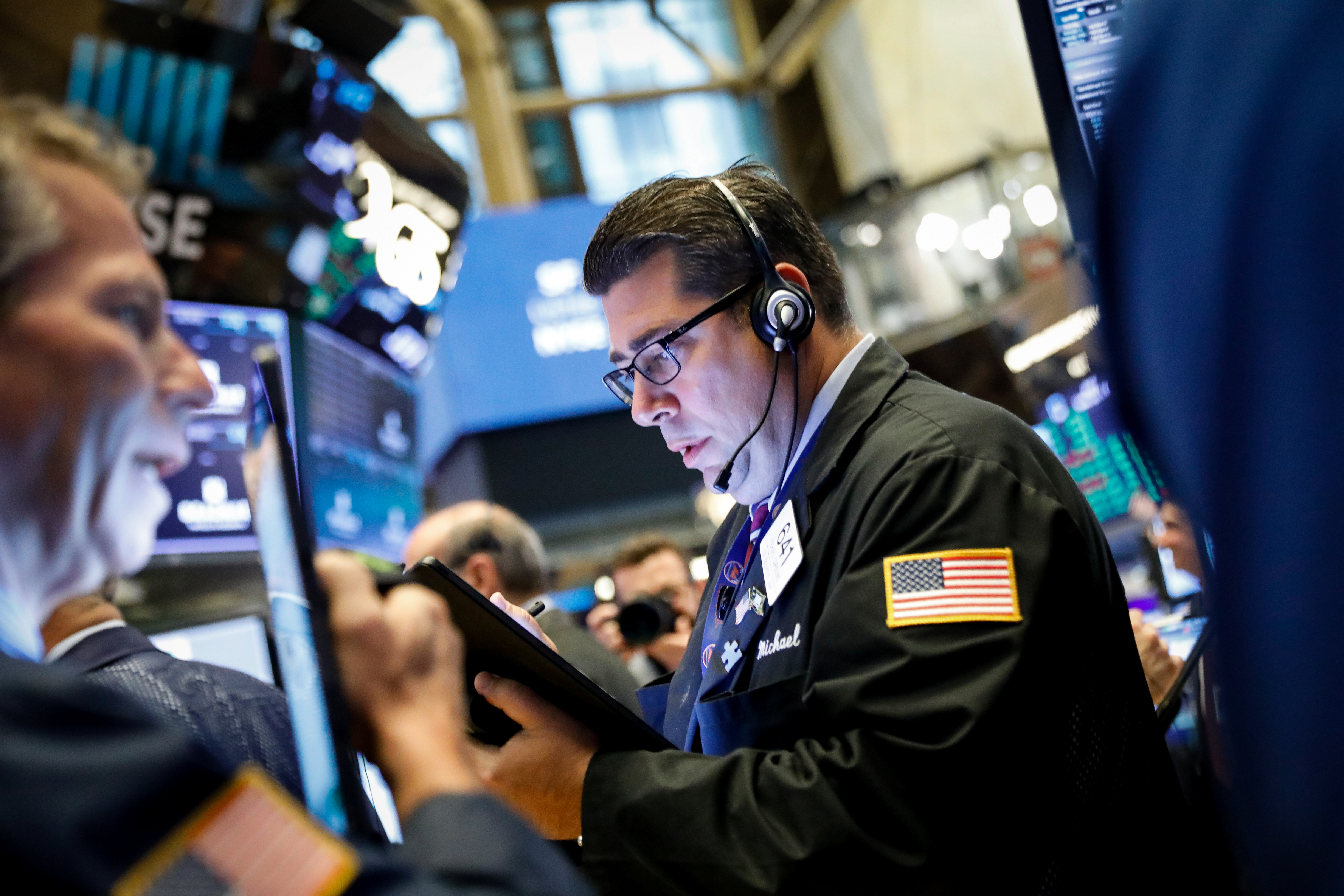- The spread between two- and 10-year Treasury yields fell below zero, something that’s preceded each of the last seven recessions.
- Its also a sign that US equities will peak, according to analysts at Bank of America Merrill Lynch.
- However, when the S&P 500 will top is unclear. According to historical precedent, it can happen in as little as one month or take more than a year.
- Watch the S&P 500 trade live on Markets Insider.
The yield curve’s most recent inversion is the latest signal the days of blockbuster growth in the S&P 500 are numbered, according to analysts at Bank of America Merrill Lynch.
The US equity benchmark is an important future indicator of US recessions, the analysts wrote.
“The typical pattern is the yield curve inverts, the S&P 500 tops sometime after the curve inverts and the US economy goes into recession six to seven months after the S&P 500 peaks.”
This pattern has occured before the last seven recessions, the analysts said. That means that there’s a peak on the horizon for the S&P 500. But it’s difficult to pinpoint exactly when it will happen.
"Sometimes the S&P 500 peaks within two to three months" of an inversion between the two-and 10-year Treasury yields, the analysts wrote. But they also note it can take one to two years for the market to peak after an inversion.
In the last 10 inversions, from 1956 to present, the S&P 500 hit highs within three months six times, according to Bank of America. The other four times there was a yield curve inversion, it took 11 to 22 months for the S&P 500 to peak.
This doesn't mean that the analysts are predicting an immediate S&P 500 meltdown, or saying that growth isn't possible in the near-term. In some cases, the S&P 500 has rallied - an average of 16.7% - before falling in a "recession-related drawdown." So, there could be new high ahead for the S&P 500 before any downturn happens.
The average correction in the S&P 500 during a recession is about 31.7%, the analysts said, and tend to last between 14 and 15 months. A correction could be less severe this time, the analysts wrote, because of the current bull market the S&P 500 is in. While recessions do occur during "secular bull markets," the analysts wrote, there is a silver lining - "S&P 500 pullbacks associated with recessions during secular bull trends are much less severe."


